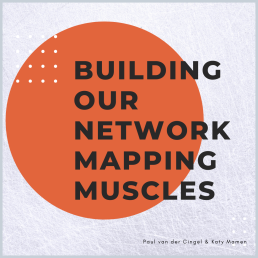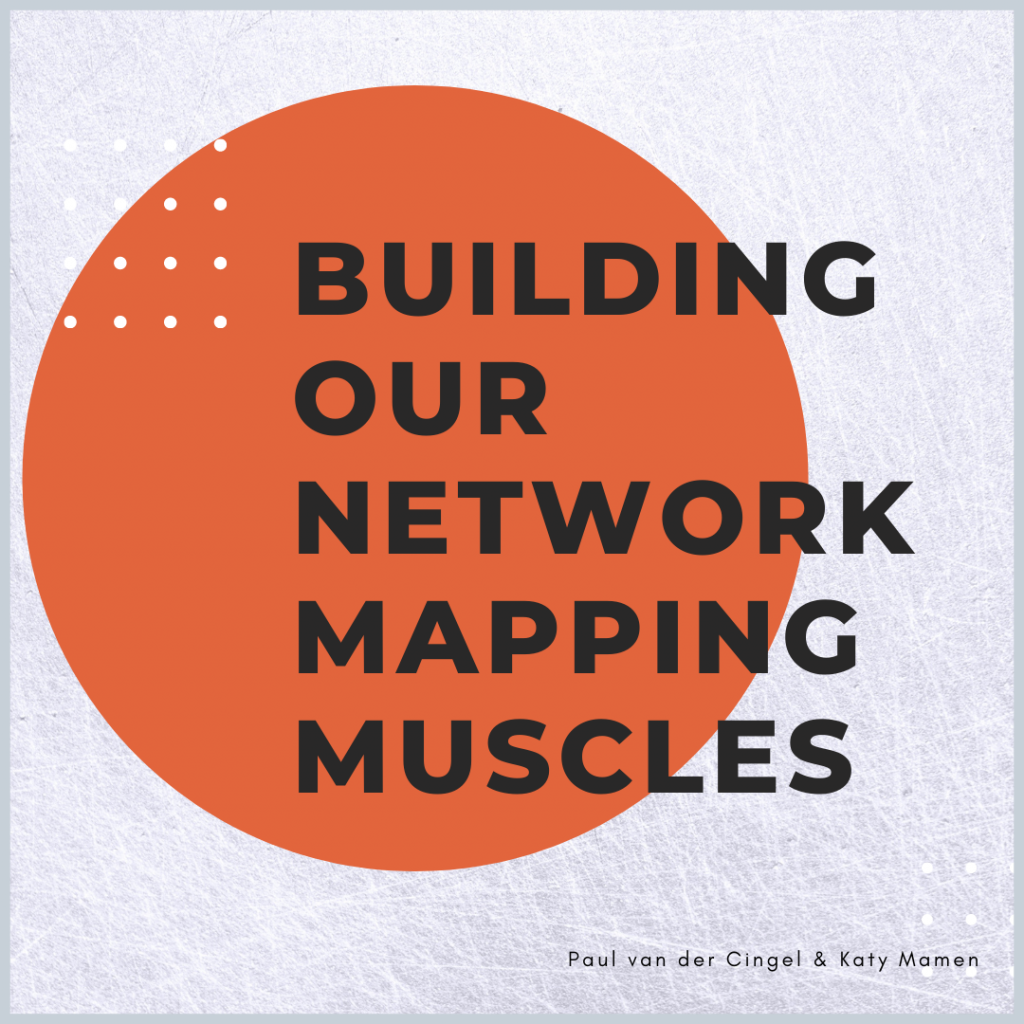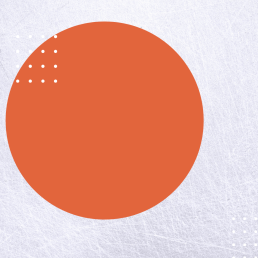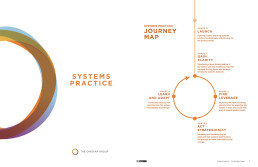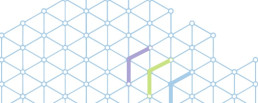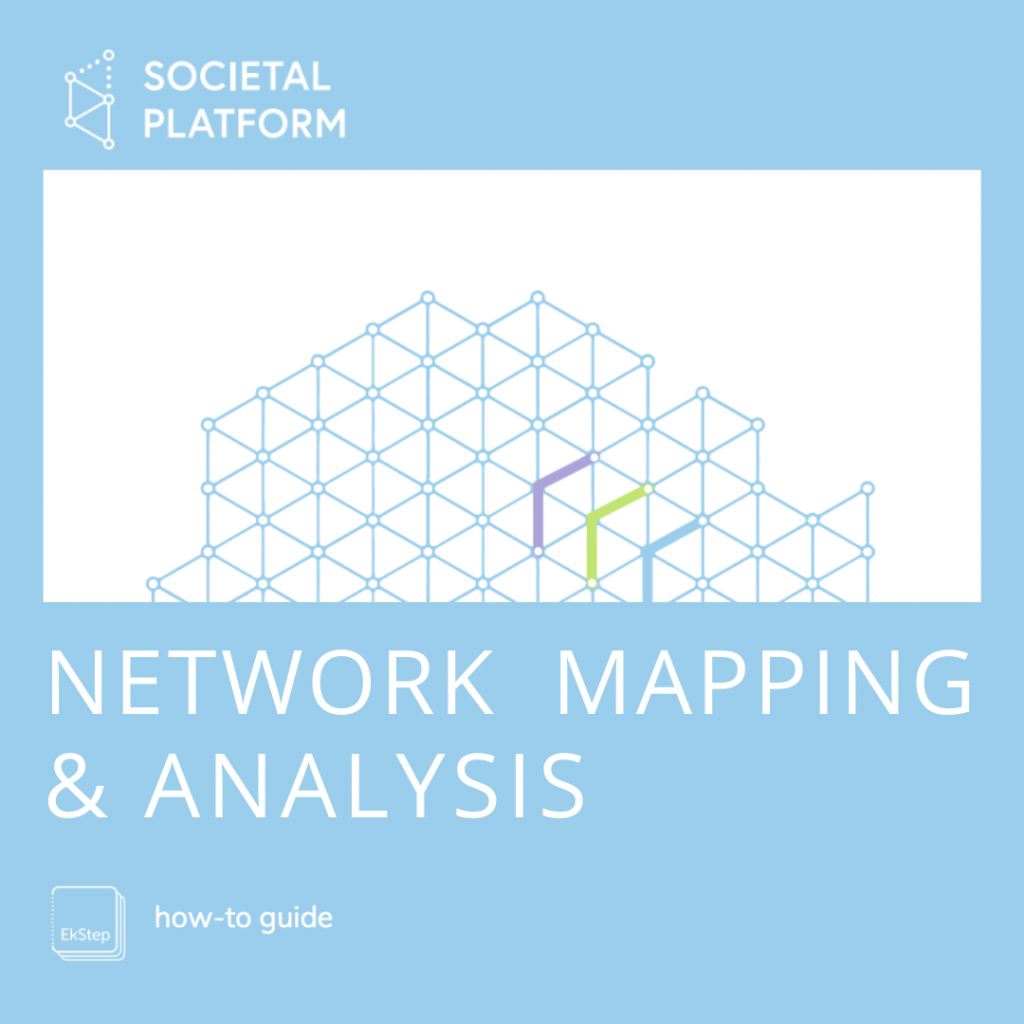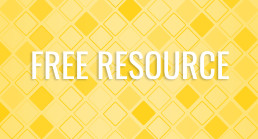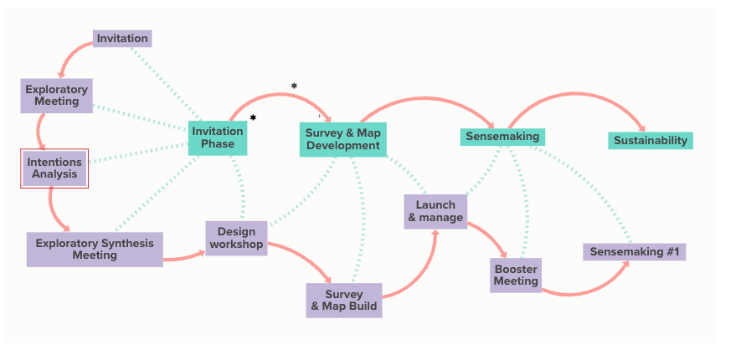Weaving at Work
Over the past few years, I have been increasingly influenced by the concept of “weaving” — what for me means connecting people, ideas, and projects to foster more collaborative social change.
Weaving is a skill, a mindset, and a way of being. More art than science, it requires deep listening, being responsive to interests and needs, and “sensing” opportunities to bring people or projects together.
In many ways, it’s synonymous with other terms we use like facilitation, collaboration, networking, community building, relational leadership, etc.
I find weaving to be an incredibly powerful tool for fostering collaboration, decentralizing ownership, and sparking wide-scale impact.
But weaving often clashes with our traditional workplace habits and structures
One of the things I’ve been struggling with lately is how to make weaving a regular and consistent part of our team.
In the network I run, despite multiple attempts weaving still doesn’t show up in our to-do’s or our impact tracking system. When our time is limited (which is almost always), it quickly becomes a “nice to have”.
Often, we work in systems that are linear, logical, and task-based—from project management, to communication and coordination, to data analysis. Weaving is by nature more intuitive, emergent, and relationship-focused, and sometimes just doesn’t seem to fit.
As a result, weaving can be hard to integrate into our task lists, to coordinate across our team members, and to openly report on. And because our managers and supporters usually don’t see or experience it themselves, it can go unnoticed and misunderstood.
So how can weaving become a core activity that we regularly practice and valorize in our workplaces?
Last week, June Holley and I hosted a brainstorming session with the Weaving Lab around this question. Here are some of the ideas that came up:
- Weave everywhere, all the time — and explicitly state that you’re doing it. For example, in interviews you can cluster small groups of people who don’t know each other and tell them relationship building is a core goal of the interview. In team meetings you can leave time for storytelling and explain why this is important for building trust. In large group events you can integrate simple getting-to-know-you activities, and explain how connections are the core of any collaborative work.
- Explicitly write weaving in our daily task lists. Be they digital or analogue, try to make sure weaving is written down as a regularly-occurring task (e.g. weekly) for each team member. So even when a direct opportunity for weaving doesn’t show up to you, your job is to “find” one.
- Enable weaving through a light-touch database system. Keep an updated list of your team and community members’ needs, interests, gifts, skills, fields of work, engagement level, etc. Make it simple, so it’s easy to skim. And use your weekly task to actively “identify” new opportunities for weaving (don’t expect community members to do this themselves!). For example: find 3 people who haven’t met but you think would get along and introduce them to each other. Or, share a funding opportunity with 4 people working in a similar field of interest. By the way, CRM systems aren’t set up for this, so consider using a flexible tool like Asana or AirTable, or a network mapping tool like Kumu.
- Don’t weave alone or in isolation — weave with others. Mark “weaving opportunities” as a fixed item in your team meeting agenda. This helps you better coordinate to avoid overlap, be creative in finding weaving opportunities, and be accountable to making it happen, while also building a culture of weaving. One note:make sure your team has diverse weaving capacities so you can complement each other.
- Document and share weaving through simple and regular processes. Integrating weaving updates into your team meetings—e.g. “what relationships have we build this week” — so you capture and share things you may not have recalled. Have a simple “checklist” for immediately logging when weaving occurs (make it super easy, 15–30 seconds to open, log, and close). And do annual surveys and check-ins with your community to see what impact weaving has had over time.
- Help people whose support you need (e.g. bosses, funders) to “get” it. Use common concepts and metaphors that can make weaving easier to understand. Collect stories of weaving and share those with them. Invite them to to engage directly in weaving practices (e.g. a peer-to-peer problem-solving session where they can get support on a challenge they face and experience weaving in practice). And hold multiple meetings with them where you let them can ask you questions and get to know the practice better.
What would you add?

Brendon Johnson is a seasoned changemaker with a passion for strategies and models around networks, communities, participatory organizing, and collaborative action
Originally published at Medium
Photo by Alina Grubnyak on Unsplash

Network Weaver is dedicated to offering free content to all – in support of equity, justice and transformation for all.
We appreciate your support!
donate in the box above or click here
Building Our Network Mapping Muscles
On Wednesday March 16th Katy Mamen and Paul van der Cingel held a webinar on “Building Our Network Mapping Muscles.” For those of you who weren’t able to attend the session, we are making the video available as part of the resource packet on network mapping. This resource packet also includes a more detailed slide deck than the one shown in the video.
Many other mapping resources were mentioned in the chat.
- Many people use kumu.io to visualize their mapping data. There are tutorials on their site and Christine Capra (Greater than the sum) can help.
- NodeXL has a focus on using twitter and Facebook data as a way to surface relationships in larger groups.
- SumApp is the survey platform that many people use to gather mapping data from network participants. See https://greaterthanthesum.com/
- There is a community of practice for network mappers. You can sign up here
- June Holley shared a set of sample questions you can use in a survey Christine Capra added, “A pair of questions that's been really useful in some networks I've worked with are 'what are the opportunities you're seeing?' and 'what challenges are you facing?'”
- There are 6 additional mapping resources here.
You can contact presenters at katy at sonic.net, p.van.der.cingel at windesheim.nl and christine.capra at gmail.com
Download the full resource - including the slide deck and PDF with link to webinar, HERE. OR Access the webinar directly, HERE.
BUILDING OUR NETWORK MAPPING MUSCLES : A Webinar
You are invited to an interactive webinar on network mapping on March 16th
An introduction from June Holley
Some time ago I connected Katy and Paul, as they were both interested in new approaches to mapping. After further conversations they decided to collaborate (which I affectionately call a "Twosie") on a slide deck that presents their approaches - which is just what I always hope will happen with an introduction!
The thing I particularly love about their work - and why I think you should come to this workshop - is that they understand that the real power of network mapping comes when the network itself has a chance to make sense of the maps and use them to improve their network.
* * *
Building Our Network Mapping Muscles: Perspectives on the effective use of network maps
the upcoming webninar:
Network maps are a powerful tool for accelerating connection and impact in network activities. Discerning what type of network map fits best for the network’s needs, as well as taking thoughtful steps to make the maps most deeply serve their intended purpose, are important considerations for network weavers and members alike.
In this Network Weaving Institute-sponsored session, network practitioners Paul van der Cingel (Windesheim UAS, The Netherlands) and Katy Mamen (Water Bear Collaborative, USA) will share lessons learned from several learning and impact networks they have worked with. June Holley will open the session with some remarks about the emerging field, and following the speakers’ presentation, participants will have an opportunity to share and discuss additional lessons learned about building effective networks.
Wed Mar 16, 2022 2pm – 3pm Eastern / 11am – 12pm Pacific
click here for session information
the Slide Deck Resource:
This slide deck was inspired by an earlier presentation on the Network Weaver website about the Innovation Learning Network (a network of hospital systems across the U.S.), which implemented a highly effective strategy to use their network maps.
A central message of the Innovation Learning Network resource is that “network mapping needs to be combined with a strategy for engaging network participants in interpreting the maps and then developing strategies for connecting people in the network and drawing in new participants.” Building on the ILN’s learning, this resource offers additional perspectives on:
- different types of network maps and their utility for different applications
- high-leverage ways to make the most of your maps.
Access the slide deck HERE
* * *
Katy Mamen is Principal at Water Bear Collaborative, a consultancy that supports individuals, organizations, and networks to envision and implement system-informed strategies that effectively address the complex and interconnected challenges of our time. Katy passionate about participatory change-making approaches that account for the complexity of multiple, interconnectedness crises and diverse lived experiences.
Katy is a Fellow of the Academy for Systems Change, Senior Partner at Ag Innovations, and a member of the Network Weaver Consultants Network. She has an MSc in Holistic Science (with Distinction) from Schumacher College in the UK and a BSc (Honours, First Class) in Physical Geography from McGill University in Montreal. Katy lives in a land-based intentional community in Northern California, where she has honed her consensus decision-making skills over the past 15 years.
Paul van der Cingel started out as an economist with an honours degree from Tilburg University.
He holds a parttime position as Intrapreneur at Windesheim University of Applied Sciences in the Netherlands, focused on designing, testing and implementing new ways to foster education on complexity.
He contributed to the Network Science in Education Initiative (NetSciEd) by initiating their Concepts & Ideas Brochure translation movement, out of which 18 translations have emerged up till now. See here.
Outside of Windesheim University, Paul is an independent trainer and consultant. You can reach out to Paul:
By sending an e-mail to: p.van.der.cingel@windesheim.nlor on social media via LinkedIn.
Systems Practice, Abridged
When you’re making a system map in Kumu, it’s important to have skill and familiarity with the tool itself, but it’s equally important to have an understanding of the concepts of systems thinking.
You can learn these concepts and learn Kumu at the same time if you follow the Systems Practice methodology developed by The Omidyar Group. When we’re mapping systems ourselves, teaching systems skills, or simply brushing up on our own skills, this methodology is one of our all-time favorites.
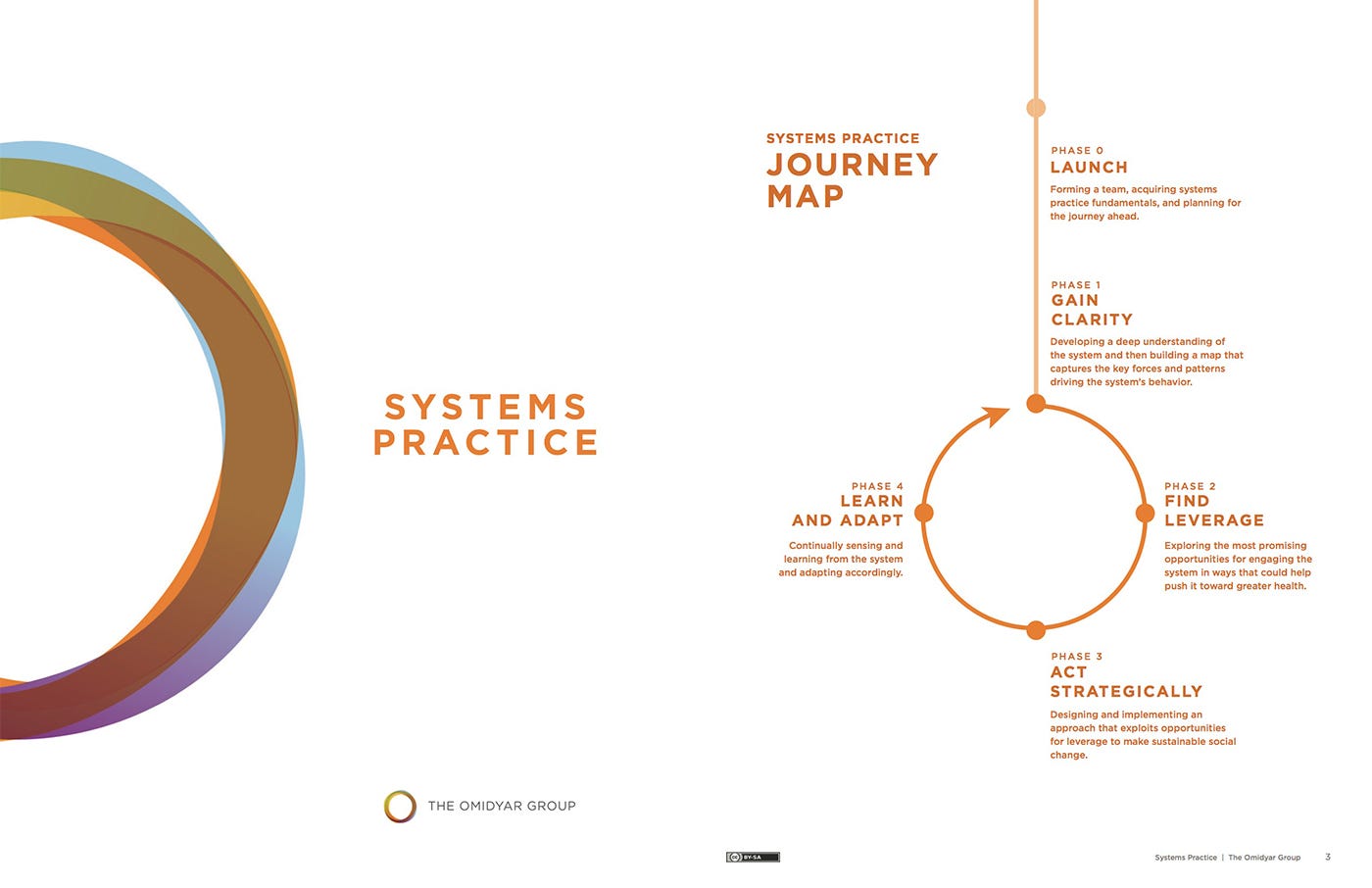
Notably, though, the Systems Practice methodology is time-consuming. The workbook itself is nearly 100 pages long, and it mandates weeks, if not months, of study and stakeholder engagement.
For serious system mapping work, spending this much time studying, thinking about, and mapping your system helps ensure you are addressing root causes rather than instituting quick fixes. In the long term, the time and resources you invest in Systems Practice will pay dividends.
But what if you’re not quite sold on the Systems Practice methodology yet? What if you haven’t encountered systems thinking before and just want to dip your toes in? Or what if you’re an expert or an educator with only a few hours to introduce Systems Practice to a fresh new group of systems thinkers?
At Kumu, we face this problem all the time! Whether we’re doing a product demo, giving one-on-one support to Kumu users, or leading day-long trainings, we rarely have more than a few hours to introduce Systems Practice, introduce Kumu itself, and get as close as possible to the first draft of a system map.
Give those constraints, and after plenty of trial and error, I’ve settled on an abridged version of Systems Practice that fits comfortably into a 2–4 hour session. In this article, I’ll share the main concepts and activities that comprise “Systems Practice, Abridged,” organized into the following sections:
- What is a Systems Practice? [ap_spacing spacing_height="5px"]
- The power of mapping with Kumu [ap_spacing spacing_height="5px"]
- Applying systems thinking [ap_spacing spacing_height="5px"]
- Incorporating others’ perspectives [ap_spacing spacing_height="5px"]
- Leverage and learning
What is a Systems Practice? (15–30 mins)

Under time pressure, I gravitate toward a short and snappy definition of Systems Practice:
Systems Practice is a methodology for solving complex problems.
This definition is such a barebones collection of words that, at first glance, it hardly seems to do justice to the power and promise of Systems Practice. But, digging deeper, I think it unpacks nicely:
Systems Practice is a methodology…
Systems practice is decidedly not a simple tactic; it’s not something you can accomplish in a day; it’s not a band-aid or a quick fix. It’s a methodology composed from a full suite of techniques for studying and describing complex systems, then identifying appropriate actions to take to ensure that certain system dynamics persist and others fade away.
…for solving…
Systems Practice has a clearly defined outcome: solutions to your problem. Gaining knowledge and insight is a beautiful thing. I have a huge soft spot for research, data collection, experimentation, and analysis, but even I know that knowledge without practical action won’t help us address the major challenges of this century and beyond.
…complex problems.
Systems practice isn’t appropriate for all problems! It’s appropriate for complex problems, which you can identify by looking for the following characteristics:
- Understanding of the problem is low. [ap_spacing spacing_height="5px"]
- Consensus about what to do in response to the problem is low. [ap_spacing spacing_height="5px"]
- The problem is not self-contained. It’s intimately connected to a dynamic and changing environment that is outside of your control. [ap_spacing spacing_height="5px"]
- Your intention is to make long term change rather than achieve short term goals.
The power of mapping with Kumu (30–60 mins)

A system map is one of the main deliverables that Systems Practice produces, and its purpose is not only to help you understand the context and identify potential solutions, but also to document your thoughts and decisions along they way.
Kumu is a tool for creating digital system maps that not only show the intricate structure of systems, but also allow you to create profiles, rich with metadata, for each of the factors, connections, and loops in the system. This approach encourages you to draw conclusions from the overall structure of the system, but still provides a great home for more precise information gathered from people with real-world experience in specific areas of the system.
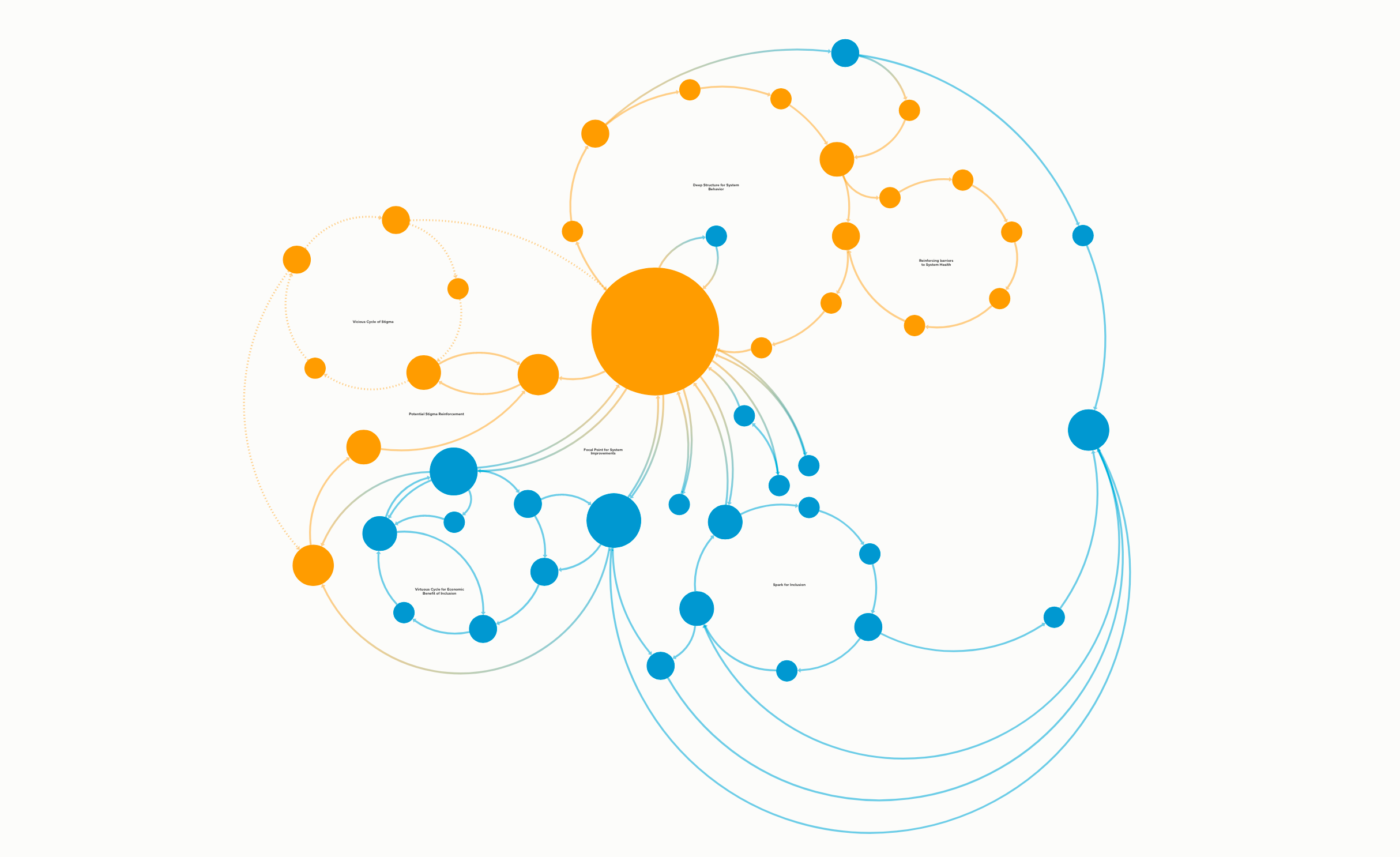
As you implement a long-term solution, you’ll continually be able to return to the map to remember why a certain process or program was put in place, how small actions relate to the bigger picture, and what assumptions did or did not factor into the original decision-making process. Very important stuff!
That said, you don’t have to be a Kumu expert before you start working through the Systems Practice methodology. If you’ve never used Kumu before, there are only a few basic concepts you need to know that will help you dive in — I like to call this collection of concepts “Kumu 101”:
How do I get started with my first Kumu project?
I recommend working through our First Steps guide, which goes through everything you need to know to hit the ground running.
The First Steps guide will teach you how to pick a template, how to start building your system inside the map, how to design and customize the map, and how to invite other people to help you out.
Where can I go to learn more about Kumu?
To help you learn more about Kumu, we put together some great resources. First and foremost is our documentation website, where you can find guides on everything there is to know about Kumu.
You can also subscribe to this blog, check out the In Too Deep podcast, and follow us on Twitter, Facebook, and Linkedin!
If I get stuck, where can I go for help?
If you get stuck and need advice, feel free to email us at support@kumu.io, or post in our public Slack workspace at chat.kumu.io. And if you have awesome work to share, we’d love to see it in either of those channels!
For more info and inspiration on what I like to cover when introducing Kumu and system mapping, check out our blog post on Kumu 101.
Applying systems thinking (30–45 mins)

If system mapping is the science of Systems Practice, systems thinking is definitely the art. Identifying a system’s factors, relationships, and feedback loops, with all of their categories, subcategories, archetypes, and metadata, is a complex process and will be a unique experience for each individual system you study.
Even so, there are a few tactics you can use to apply systems thinking and extract factors, relationships, and loops more quickly:
Define a guiding star and a near star
Your guiding star (you’ll likely have one) is the answer to the question, “What healthy, future system is your team passionate about working toward?” and your near stars (you’ll likely have more than one) are the answers to these questions:
- What have you learned about how to be effective in your sector? For example, what have you learned about how to counter human trafficking/ slavery? [ap_spacing spacing_height="5px"]
- What outcomes are most important to your organization? For example, do you have organizational beliefs or values that cause you to prioritize specific populations or parts of the world or communities? [ap_spacing spacing_height="5px"]
- What sub-sectors or outcomes play to your team and organization’s strengths (e.g., capacities, knowledge, networks)? [ap_spacing spacing_height="5px"]
- What trends, research/new findings, or bright spots have you seen that point to promising approaches?
Another helpful framing idea: your guiding star is a broad, ambitious goal that will take 7–10 years to achieve, and near start are impactful but narrower goals that take 3–5 years to achieve.
Your guiding star and near star will often become the first factors that you add to your map.
Start with abstract categories, then get more specific
In the System Practice workbook, there’s a great activity that involves identifying “enablers” and “inhibitors” in your system. The workbook gives excellent definitions for these terms, so I’ll quote directly:
An enabler is a significant force in the environment that supports, encourages or increases the health and effectiveness of the system as defined in your guiding star.
An inhibitor is significant force in the environment that undermines or prevents the health and effectiveness of the system as defined in your guiding star.
In my experience, the “enablers vs. inhibitors” categories are superbly useful, but not necessarily because those categories exist in every system. Rather, the simple act of defining any abstract category of factors makes it easier to fill up the map with concrete examples.
Use the enablers/inhibitors dichotomy, or come up with your own categories (e.g. political, economic, social, environmental, and technological), then let those categories guide you toward specific factors that actually exist in your system.
Pro tip: If you’re adding factors to your Kumu map while you brainstorm, take a second or two to open the profile of each factor after you create it and add its category to the “Type” field (just underneath the label). Or, if your factor can fall into more than one category, add all of its categories as Tags:
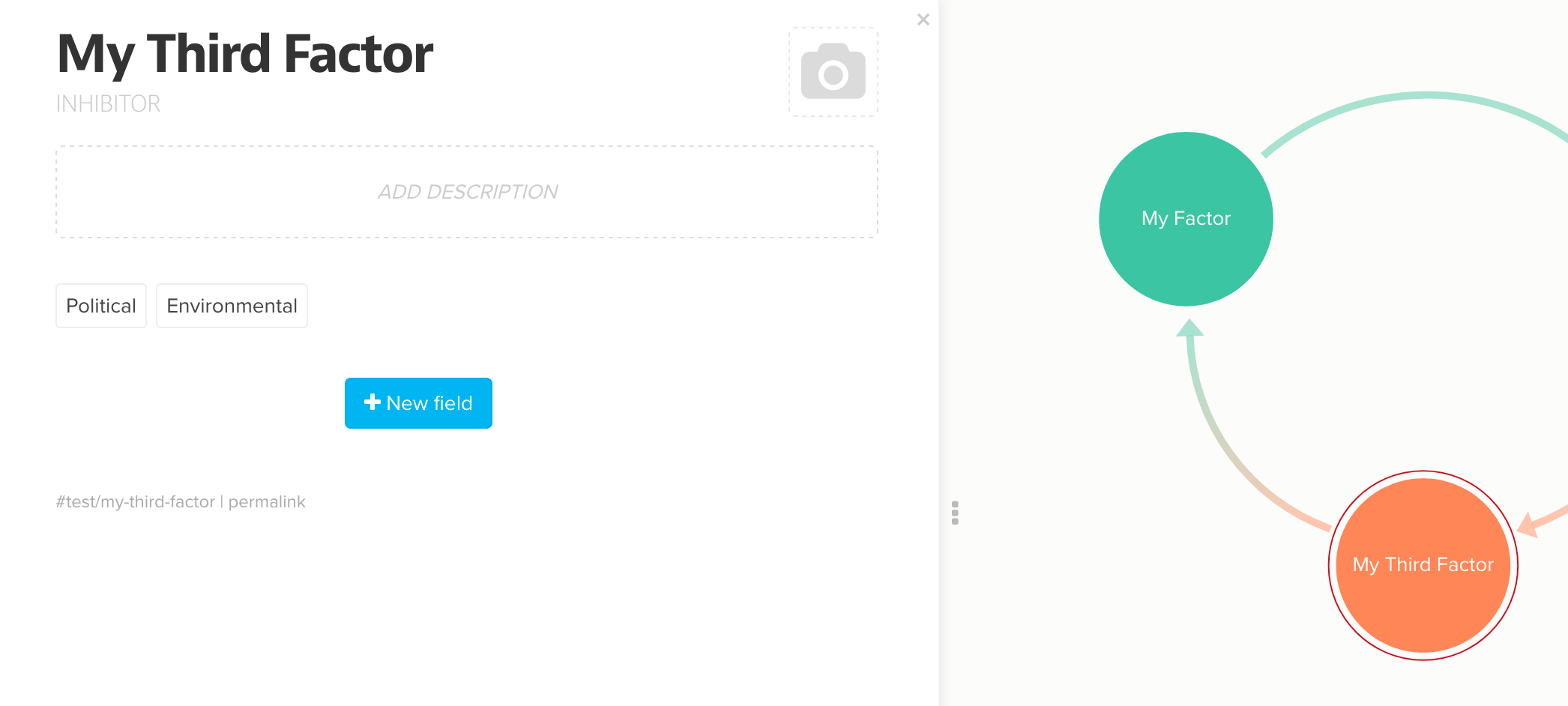
Write a few paragraphs describing the essential narrative(s) of your system
Tell a few stories about your system, describe both the challenges you perceive and their potential solutions. If you’ve already added some factors to the map, incorporate those factors into your paragraphs.
Once you’ve written your paragraphs, the real work begins: translating your words into cause and effect relationships. There’s a trick to doing this well: the relationships will be hidden in the the verbs you used to describe your system.
Some relationships will be easy to find:
- Factor A increases the likelihood of Factor B
Given that sentence, you can confidently draw a connection from Factor A to Factor B on your map. But in real prose, causal relationships will usually be a little more difficult to find — they’ll be spread across multiple paragraphs, hidden by fancy sentence structures, or split up by interjections and asides. They’re also likely to use more creative words than “increase”, for example, “A is key to B,” or “In order to have Y, we need to have X first.”
If you get stuck on a factor that doesn’t seem to have any connections, just ask yourself:
- What increases/strengthens/leads to/creates this factor?
- What decreases/weakens/detracts from/destroys this factor?
Each new answer you find will be another connection for the map.
Look for loops
Colloquially, you can use the word “loop” to describe any kind of line that curves around in a circle or an oval. When you’re mapping systems in Kumu, you’ll find many groups of connections that meet that definition, but they aren’t necessarily the loops that a Systems Practitioner is looking for.
In a system map, my litmus test for discovering loops is to ask the question, “If I follow the arrows in this group of connections, can I get trapped?” If the answer is yes, I’ve found a loop, if not, the structure is not a loop, but might still be complex enough to deserve some further study.
Here’s an example of a structure that looks like a loop, but is not, because no matter which arrow I follow, I always end up at the same factor, escaping the trap:
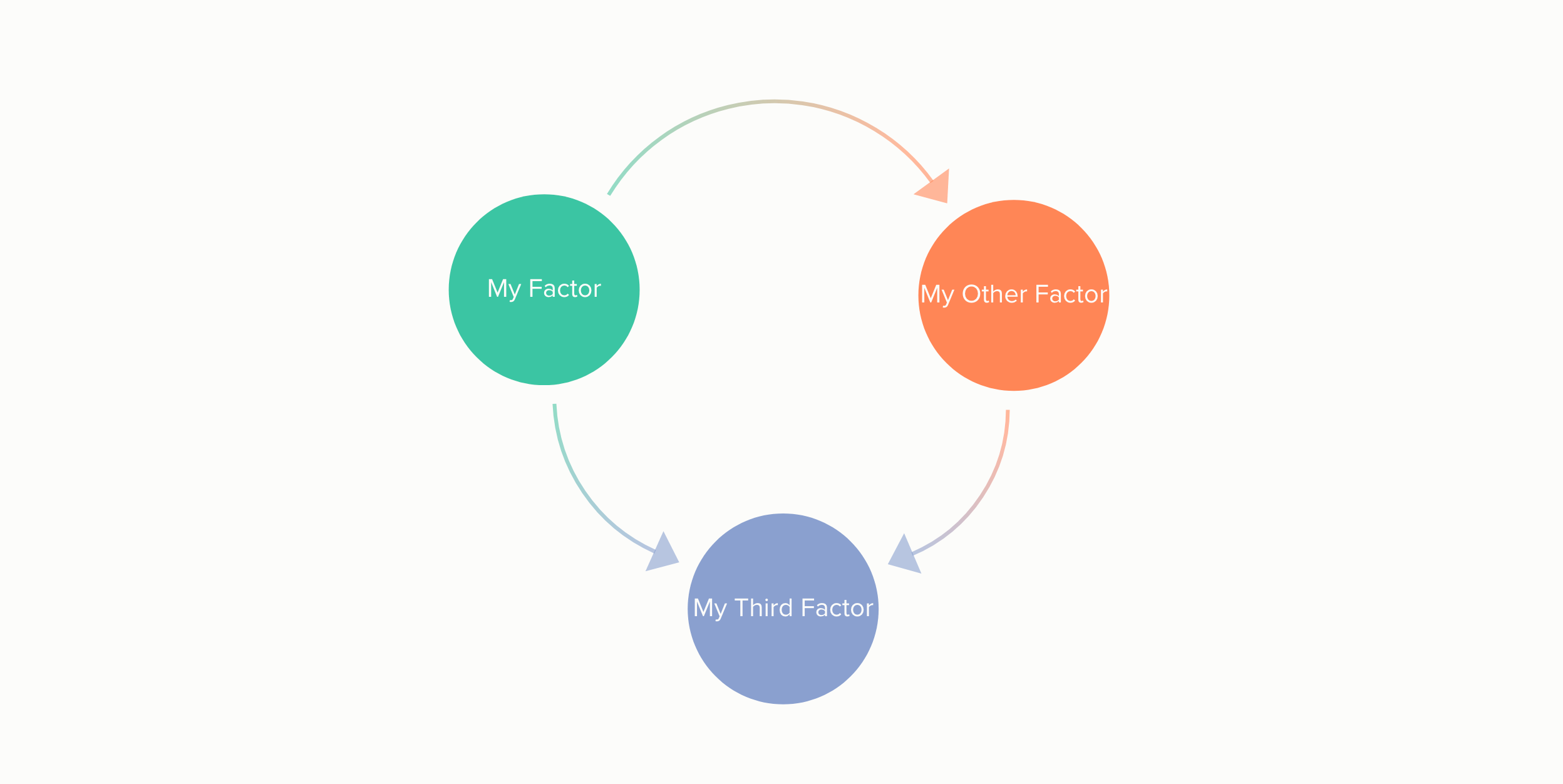
On the other hand, if I reverse just one of the arrows in the structure, I inevitably get trapped going around and around in a circle:

This is the kind of loop we’re looking for in Systems Practice. It’s rarely so simple — in many cases, your loops will contain more than three connections, and they likely won’t be laid out in such a nice, circular shape.
But, after you’ve gotten a few practice rounds under your belt, I’m confident that you’ll have no trouble picking out groups of connections that cycle you through the same factors, over and over again, repeating the same dynamics, cycling through the same factors, over and over again, repeating the same…ahem. Moving on!
Incorporating others’ perspectives (45–90 mins)
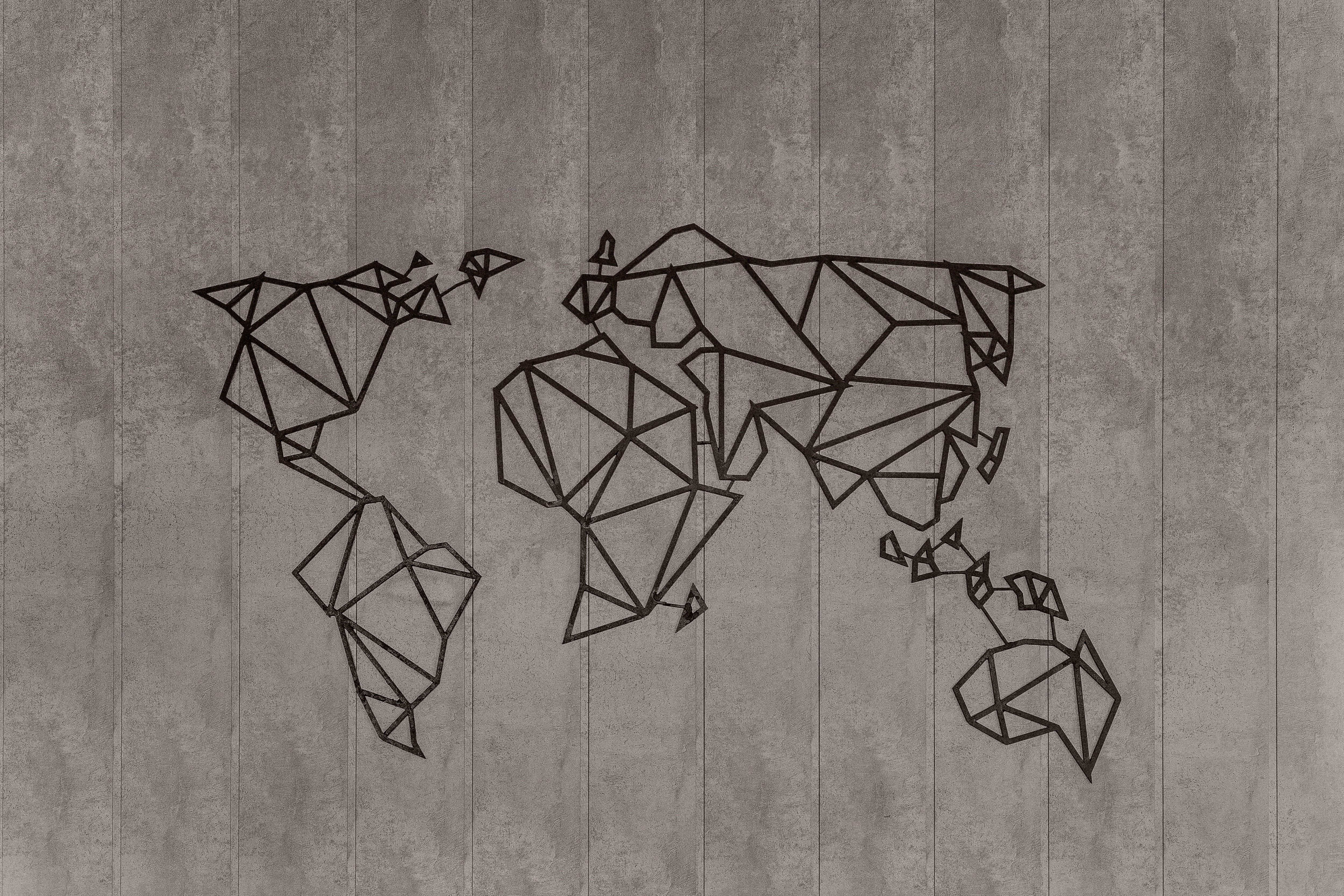
If you’re going solo on your system map, hats off to you! It takes guts to try and understand a complex system all on your own. We invite you to return to this article anytime you need some extra guidance, or, if you need help, reach out to us in our public Slack workspace at chat.kumu.io.
If you’re working with a team, you can incorporate their perspectives into your Systems Practice with a simple team activity:
- Designate someone to be your Kumu mapmaker. This person should have a solid grasp on the concepts covered in the Kumu 101 section of this article. [ap_spacing spacing_height="5px"]
- Everyone else can take turns identifying factors, connections, and loops in the map, using the tactics described in the Introduction to Systems Thinking section of this article, while the designated mapmaker adds them into the Kumu map.
I’ve found that it’s fun and helpful to set a limit on how much each person can contribute — for example, set a rule that each person can add 3 items (i.e. factors or connections) to the map, or they can take a stab at identifying and naming one loop. After someone hits their limit, move on to the next person and get a fresh perspective!
Leverage and learning (30–90 mins)

If you work through everything I’ve outlined in this article so far, you’ll have completed only two of the five total sections in the Systems Practice workbook. Clearly, there’s much more work to do!
The final three sections of the workbook teach you how to:
- Identify actions you can take to make change in your system [ap_spacing spacing_height="5px"]
- Strategically take those actions [ap_spacing spacing_height="5px"]
- Learn from the results of those actions [ap_spacing spacing_height="5px"]
- Adapt for the future
This work is very complex and important, and it’s arguably irresponsible to undertake it after only a few hours of systems study. But, in your abridged Systems Practice session, I do think it’s possible to sketch out an action plan, if only to familiarize yourself with the remaining steps of the process.
With that in mind, here are a few practical things you can do with your remaining time:
Identify leverage opportunities
In the context of Systems Practice, a “leverage opportunity” is an action that strikes a balance between feasibility and long-term positive impact in your system.
Explore that thought for a moment: acknowledge that there are many possible action you could take that will affect your system. Some of those actions require very little investment of time, talent, money, technology, or any other resource you have access to, and some require much more than the resources that are available to you. Some of these actions will create huge positive impact, some will create small positive impact, and some may even create negative impact.
More often than not, the actions that create the largest and most positive impact are also the least feasible.
To identify leverage opportunities, start by brainstorming actions you could take, anywhere in the system. Once you have a robust list, evaluate each action, and make explicit predictions about what type, quality, and quantity of resources each action requires, as well as what size of impact each action will make, and what potential ripple effects it might cause.
Narrow your list of actions down to include only the ones that seem to strike a balance between feasibility and impact. Remember that this is a judgement call —your system map and your feasibility & impact predictions can guide you, but at the end of the day, only you can decide which actions are worth pursuing!
Make a measurement and learning plan
You now have some pretty detailed predictions about how your leverage opportunities will affect you and your system, but how will you know if they come true? By measuring the effects!
In any system, the first actions you take are almost always imperfect, and you’ll need to learn from those imperfections, then pivot and adapt. Before taking action, you’ll want to have tools and processes in place to measure the effects, so that the next iteration will be even more successful.
Remember, the basic metrics we’re interested in are:
- What type, quality, and quantity of resources each action requires [ap_spacing spacing_height="5px"]
- What magnitude of impact (positive or negative) each action will have [ap_spacing spacing_height="5px"]
- What results will emerge from the ripple effects caused by your actions
You can definitely add to that list as you see fit; every system will have unique measurement needs.
Once you know what metrics you’re interested in, commit to measuring them regularly — keep a journal, make a spreadsheet, talk into a tape recorder, build a robot that follows you around and watches everything you do — whatever it is, just make sure you’re measuring!
Most importantly, make an effort not to take these measurements alone. They are often subjective and tricky to pin down, so be sure to work with a team, interview stakeholders, and in general, involve other people and their perspectives in the measurement process.
Get ready for round 2!
I mentioned that Systems Practice is a methodology for solving complex problems, but you should also know that it’s a cycle.
As you act upon your system, you’ll change it, and those changes can be drastic, extremely subtle, or anything in between. When you observe changes in your system, you should return to your system map and update it to reflect the new real-world dynamics. After you update your map, you’ll of course need to rework your leverage opportunity predictions, and you may need to update your measurement strategy, too.
In short, the Systems Practice methodology requires that you continually revisit its techniques and tactics in order to adapt to your changing world.
That’s the essense of Systems Practice, Abridged! The full Systems Practice workbook is extremely well designed and well written, so we recommend working through it when you have time, but we hope that Systems Practice, Abridged can serve as a comprehensive overview for you or for any soon-to-be systems thinkers you’re teaching.
If you’d like to dig deeper into Systems Practice we encourage you to enroll in the Systems Practice course on +Acumen!
Originally published at Kumu.io
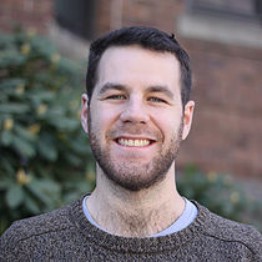
Frontend Developer at Kumu
I'm passionate about software development, data visualization, and applying science and technology in the majority world
Network Mapping and Analysis : How-to Guide | Societal Platform
Societal Platform Thinking emphasises the importance of network effects and facilitating interactions between and within formal and informal networks, involving state (sarkaar), civil society (samaaj) and markets (bazaar), to catalyse large-scale systemic change.
Network mapping and analysis can be a useful way to understand all the interactions happening in the network and the roles different actors play in the network—with respect to a specific Societal Platform mission. The ShikshaLokam example used in this guide, particularly in the network mapping section, gives a sense of how such a mapping exercise can be done for any Societal Platform mission or goal.
The guide is developed to serve as a reference framework and provide processes to help consultants and organisations engage in the network mapping and analysis process. A participatory process of involving all relevant actors across the exercises will be hugely beneficial in developing a holistic network and imagining new possibilities with the output that will come out of the network mapping and analysis process.
Network Mapping and Analysis: how-to guide:
This guide includes 3 documents:
- Report
- This document helps a Societal Platform mission and mission leader to get an understanding of the existing networks and to plan and develop the network, in the context of their mission.
- Presentation
- This presentation is an overview of the contents and processes mentioned in the document.
- Poster
- The poster provides an outline of the summary of the asset.
DOWNLOAD HERE
Originally published HERE at Societal Platform
Societal Platform is a community of curators, catalysts, and network weavers. They pool their individual strengths and channel their collective imagination to enable social change leaders to advance their missions.
Ripple Effect Mapping
Because networks often engage many people, some of whom are only occasionally involved, it is harder to track the impact of the network. One solution to this might be the use of a technique called Ripple Effect Mapping.
Historically this process was done during a face-to-face session but I believe it could also be done virtually using a mural.co whiteboard and virtual PostIt notes.
The first step is to identify the scope of the mapping. Are you identifying impact of all of your network’s activities or only a specific initiative such as an Innovation Fund?
The next step is to gather information. This is generally done at a convening, though that convening could be a zoom.us session. People are put into twosies (if virtually, they are moved into breakout rooms of two people). The twosies are given a framing question or questions:
- How has (this activity, this network) made a difference in your work, your community or yourself?
- Have you seen unexpected results?
Each person in the dyad interviews the other and records the answers.
The group reconvenes in a large group. Each person then shares their story (with the partner adding details as needed).
Then there is a second go around where people answer the questions:
- What happened as a result? And, what difference did it make?
- Did you see this type of activity spread throughout your community, to other communities, to other networks?
- Was it modified in any way?
The answers to these questions can be added as additional ripples.
Here is an example of a map:
Once the map is completed, the group is encouraged to notice all the impacts and celebrate! The map can then be converted into lists of impacts to be shared with funders or the public.
Several resources that I found helpful in learning about ripple mapping are:
If you use this process, please share the results with us in the comments section below.
Featured image by Joe Vickers
Navigating Uncertainty to Gain the Real Value of Collaboration
PART 1
Investing in Collaboration
[ap_spacing spacing_height="5px"]
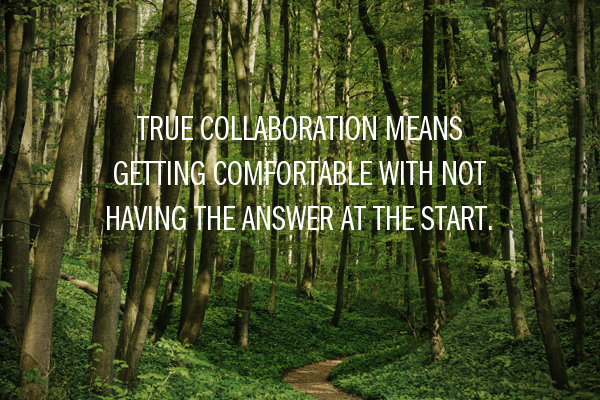
A client recently called us her “network therapists.” She works for a foundation and was helping launch a network. The foundation saw that if organizations in a region could work in a networked way they could achieve greater impact and have a stronger political voice. However, the organizations had to find the value in working together – it had to come from them – or the network would not work. Our client experienced the discomfort of wanting a concrete plan and answers while we were in the stage of creating the space for the participants to come to those answers together. Investing in true collaboration meant we asked the question of the group, and had to be open to what their answer was, even if they concluded they did not see value in creating a network.
In a similar example, the Executive Director of an environmental non-profit asked for our help in bringing together many organizations working on a specific environmental problem to align their work and create a network. He recently said to me, “What I really want is to get everyone invested and agreed on the direction we are heading, and on a plan.” If you want to arrive at a shared vision and a plan that integrates and builds on the breadth and depth of expertise and perspectives of the group, it has to be developed together. The challenge is that in order to get to that, there is a time early on where you have to bring everyone together without a clear vision or clear plan.
But wow, is this territory uncomfortable for people! Another client said “this really is a leap of faith.” Indeed. A key part of my job is guiding leaders of collaborative initiatives in how to navigate this unfamiliar territory of uncertainty. It’s a process of learning through experience that, as my friend Adam Pattantyus says, “the unknown can be trustworthy.”
In Part 2, below, we explore why the real prizes to be gained from collaboration may lie beyond our comfort zone.
[ap_spacing spacing_height="20px"]
PART 2
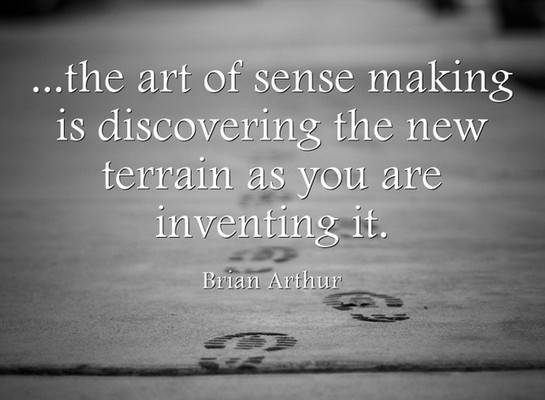
For collaboration to work, one has to be willing to enter uncomfortable territory of not having the answer. People can feel it when they are asked to collaborate but the plans and answers are already determined. It feels quite different when instead of pushing an idea or agenda on the group, there is a mutual discovery and potential for something new to emerge. Real collaboration enables us to develop ideas and solutions that could only emerge from this combination of people thinking and working together.
Showing up without an answer means you have to ‘unlearn’ things you have been trained to do and have worked well for you. Consider the following roles that leaders play and the skills needed:
- To lead an organization, you need to have a strategy, goals and plans.[ap_spacing spacing_height="10px"]
- To be an environmental or social advocate, you build a case and persuade people and those in power to adopt your position.[ap_spacing spacing_height="10px"]
- To be a good sales person or fundraiser means pitching an idea or proposal and getting others to buy or fund it.[ap_spacing spacing_height="10px"]
- To manage a project, you want to have clear goals, time lines, roles, etc. and be able to report on those to a boss or funder.
Most leaders have learned the skills to have the answers, make a case, and pitch it to gain support, funding, resources, etc. These skills are valuable; however, when in the early stages of developing a collaboration, leaders need to focus on finding the right questions and on listening and making sense of what they are learning together. The tendency to promote the answer that comes from “me” before taking the time to discover the answer that comes from “we” can undermine the full potential of a collaboration from being realized.
Another way traditional leadership skills come up short is when we are working to develop innovative solutions to complex problems. The challenges we face are enormous and interrelated, and in many cases have not been encountered before. For these kinds of “wicked problems,” there is not a simple obvious answer; there is no playbook or recipe for how to solve them. Climate change is an example of a wicked problem, e.g., it has multiple causes and disparate ideas on how to address it, it involves finding ways to motivate people to adopt different behaviors, and humanity has not faced this pace and scale of change before.
In situations like these, we need to explore into the unknown. We need to make sense of the landscape and needs, drawing on as many perspectives as we can, and then create and try various actions, learning and reflecting as we go.
Great leaders are identified by their ability to perceive the nature of the game and the rules by which it is played as they are playing it. In other words, the art of sense making is discovering the new terrain as you are inventing it. – Brian Arthur
This brings us back to the need for leaders to unlearn skills that have worked well and learn and practice new skills. The need for this new skill set and orientation is being recognized in many places and is being called by many names: collaborative leadership, participatory leadership, adaptive leadership, network leadership, leading for regeneration, leading through complexity. A core element in all of these is learning to access the wisdom of larger groups in uncertain territory. In part 3, below, we explore tips for how to navigate this territory.
[ap_spacing spacing_height="20px"]
PART 3
Tips For Navigating Uncertain Territory

Here are some of the ways I coach leaders in learning how to work in this uncomfortable territory of not having a clear answer or plan:
- Name the discomfort – I find it helps to name how uncomfortable this feels, e.g., to convene a group without a plan. Showing this graphic to the left brings some humor to it. I invite people to give it a try. [ap_spacing spacing_height="10px"]
- See it as ‘iterative design’ – The nature of this work is to design things with the group each step of the way and accept that we do not know where it is headed. I assure people if they can trust the group and give them the space to arrive at the answers together, there will be a much greater level of buy-in and commitment. We will get to clear answer(s) each step of the way and it is helpful to record, illustrate, and share back what has been decided regularly.[ap_spacing spacing_height="10px"]
- Frame strategic questions – Instead of coming up with answers, the focus is on coming up with questions. The role of the leader is to sense and clarify the context and distill what is needed into a strategic question, or series of these, for the group to answer. I imagine this as standing on the edge of the known and unknown, and asking a question that can bring clarity to the next step. This blog about Setting the Table for a Great Meeting offers a process for this.[ap_spacing spacing_height="10px"]
- Appreciate the value of the mystery – I have come to realize that the mystery of “not knowing” is the source of vitality, aliveness, and creativity. This kind of space is what draws people in. Think about watching a movie or reading a mystery novel, you are curious about what will happen next, you are drawn into to discover the clues, it is fun and entertaining. Likewise with a group, when you design an initiative or meeting by framing powerful questions that the group will jointly find answers for, this generates interest. And, when answers emerge together, which had not been clear at the start, it builds confidence in the value of this way of working.[ap_spacing spacing_height="10px"]
- Cultivate patience – This takes some inner work on the part of leaders to “let go” of those conditioned tendencies of urgency, need for action, micromanaging, command and control, deliverables, outcomes, and rush. This impatient energy of “what are we going to DO?” can undermine and shortcut the value of collaboration. A coach or colleague can point out when leaders fall back into traditional ways of rushing to an answer and action too soon.[ap_spacing spacing_height="10px"]
- Meditate – I have found that a regular practice of meditation has been valuable in learning to be comfortable in this state of “not knowing.” In Comfortable with Uncertainty, the Buddhist teacher, Pema Chodron, articulates the challenges of this territory and shares practices to hone our capacity to work in this space. The aim is to focus our attention in the present moment, and notice where our thoughts take us into planning, thinking, and figuring out. When you notice, you let them go, and repeat and repeat. With practice, it gets easier to be okay with where things are at this moment and the urge to plan and control lessens.[ap_spacing spacing_height="10px"]
- Orient people to working in this different way – There are various ways to frame how a leader can show up, such as:
- Invite people to help find answers together versus see people as someone to pitch or convince to get on board with your idea
- Give space for ideas to emerge and take shape versus debate what we already know and ideas we already have
- Make sense of a changing situation together versus assume we know the answer
- Inquire, learn, and experiment as a scientist or inventor might versus operate in a command and control mode of implementation like a military leader or project manager
- Realize that the path will only become clear as we walk it (and it will likely not be linear) versus following a pre-existing route on a map
- See conversations and learning together (i.e., that weave relationships and connections to create a rich web of networked collaborations) is itself action versus only see outcomes as things that are visible or in an action plan.
For further learning in this area, I recommend reading about the Chaordic Path or Chaordic Stepping Stones, which is a process used in Art of Hosting. This quote from Kathy Jourdain of Shape Shift Strategies sums it up well:
“’At the edge of chaos’ is where life innovates — where things are not hard wired, but are flexible enough for new connections and solutions to occur. To lead teams, organizations and communities on the chaordic path, leaders need “chaordic confidence,” to have the courage to stay in the dance of order and chaos long enough to support generative emergence that allows new, collective intelligence and wiser action to occur.”
Originally Published at New Directions Collaborative
Hand Drawn Mapping
Many networks want to generate network maps but don’t have the resources and/or time to invest in computer software of web-based mapping platforms. A consultant to help you generate these types of maps can cost $5-10,000 and take up to three months to survey and map your network.
There is another alternative and I encourage networks to try it. This is to produce simple network maps using Post It notes or by drawing on a large piece of paper.
We have compiled a new free resource module that includes directions for 5 different processes for mapping your network.The direction sheet can help you figure out which process is best for your network. Each set of directions also includes questions you can ask the group to help them analyze and make sense of the map or maps they generate.
The pictures below show examples of many different groups and give you a sense of how different the maps can look!

Although hand drawn maps do not have the detail and nuance of web-based network maps, they do help people visualize their network and start to take responsibility for making their networks healthier and more effective. They can see who is missing and reach out to invite in under represented groups. They can notice if one person or a small group is too central and has become a bottleneck or gatekeeper. They can see types of groups or organizations that are not well-connected.
DOWNLOAD HAND DRAWN MAPPING HERE
[ap_spacing spacing_height="25px"]
If you try one of the mapping processes, please let us know how it went. Did it help people in your group better understand their network?
[ap_spacing spacing_height="45px"]
How To Map Networks: Understand Basic Elements Of Networks (Agile Praxis)
WHAT IS A NETWORK?
Social networks have existed since the discovery of fire. Although we have always expressed ourselves through language, feelings and body language, and our relationships with others are evident in the networks we make, we are now more aware of this. It is now time to become even more aware of our collaborative power.
Download How to Map Networks HERE
Network Weaving Facebook Group Social System Map
[ap_spacing spacing_height="15px"]Our next call is from 9-10:30 a.m. CT on April 2nd.
[ap_spacing spacing_height="15px"]Our goals for the call are [ap_spacing spacing_height="15px"]
- People get to connect/build relationships with each other[ap_spacing spacing_height="10px"]
- Review what we’ve discovered so far;[ap_spacing spacing_height="10px"]
- Generate questions based on the feedback on intentions and what we want to know (based on the information from our first call) [ap_spacing spacing_height="15px"]
Here's the registration link and the report back that we'll be using to discover the community. [ap_spacing spacing_height="15px"]
Best, [ap_spacing spacing_height="15px"]
Sarah Ann Shanahan, The RE-AMP Network
Report Back #1
Exploratory Meeting (February 13, 2019)
Authored by Jim Best (best.jim@gmail.com)
[ap_spacing spacing_height="20px"]
Introduction[ap_spacing spacing_height="15px"]
This Report Back captures the learnings of an initial Exploratory Meeting on Zoom held by MasterMappers to assess interest and start to understand some of the purposes that are alive in the Network Weaving Facebook community. The draft Report Back has produced generative conversation in the comments (left intact here) that will help us move forward in a subsequent Exploratory Synthesis Meeting in April. Thanks all!
[ap_spacing spacing_height="15px"]47 registered for the 60 minute Zoom event, 24 attended, and 13 expressed initial interest in some kind of co-production of the social system map with the Master Mappers going forward.
[ap_spacing spacing_height="15px"]The agenda of the meeting:
[ap_spacing spacing_height="15px"]
- (05) Welcome[ap_spacing spacing_height="10px"]
- (05) 27 Intros captured in chat (simultaneously)[ap_spacing spacing_height="10px"]
- (05) Orientation to the mapping project[ap_spacing spacing_height="10px"]
- (20) Small group breakouts of 3 to address 3 questions (Google Doc capture)[ap_spacing spacing_height="10px"]
- (05) Reflections on the experience[ap_spacing spacing_height="10px"]
- (05) Demo of sumApp and Kumu mapping tools[ap_spacing spacing_height="10px"]
- (10) Next steps. Poll for interest in co-producing a map[ap_spacing spacing_height="10px"]
- (05) Plus/Delta & Closing[ap_spacing spacing_height="15px"]
There are a set of Exploratory Meeting Notes created by the participants as we broke out into small groups. This level of detail is for hardy souls! It provides a look at the actual conversations in the words of the participants rather than MasterMappers’ summary of them. I’ve tried to provide value at this summary level while still giving a flavor of this vibrant meeting.
[ap_spacing spacing_height="15px"]The following sections use a “What? So What? Now What?” format to move from observation to meaning to action. See more about the rationale for this framework on the Human Systems Dynamics website or the Liberating Structure by the same name.
[ap_spacing spacing_height="25px"]
What?
The participants spanned 5 countries and 9 states comprising a variety of backgrounds (intros captured in the chat box).
[ap_spacing spacing_height="15px"]People come to the NWFB group with a variety of intentions. The recent Virtual Network Cafe#1 small group discussions surfaced some of these same intentions. That event provided a useful cross-validation and we look forward to more of these kinds of discussions where we begin to form an identity and discover purposes.
[ap_spacing spacing_height="15px"]We focus on intentions because sufficiently strong purposes and opportunities attract the passion and energy that lead to the necessary relationships and resource-sharing required for action. What are those intentions?
[ap_spacing spacing_height="5px"]Intentions
We asked, “Why did you join the Network Weavers Facebook group and what do you hope to get out of this community?”
[ap_spacing spacing_height="15px"]Several recurring themes emerged from the small group discussion about intentions for being part of this NWFB Community. Some categorizing and lumping of comments give the following list of intentions (in order of frequency mentioned): [ap_spacing spacing_height="15px"]
- Learning community (10)[ap_spacing spacing_height="10px"]
- Community of peers (9)[ap_spacing spacing_height="10px"]
- Social justice focus (7)[ap_spacing spacing_height="10px"]
- Change within our groups (6)[ap_spacing spacing_height="10px"]
- Build the field of network action/thinking (3)[ap_spacing spacing_height="10px"]
- Giving & getting help (3)[ap_spacing spacing_height="15px"]
Here are a few of the detailed comments that give more color:
[ap_spacing spacing_height="15px"]
- Learning community; ask questions, exchange resources (10) [ap_spacing spacing_height="10px"]
- Social justice focus (7)
- Connecting faculty across a university toward greater impact in community engagement
- Connecting people across London -- community organizing, network mapping, story mapping
- aiming to help make London a more networked city
- Network forms are more able to spark policy change
- create conditions for racial diversity in our community and ensure that what and how we are doing this is aligned with various needs & interests
- how can we use network mapping to advance deep equity?
- how power and influence overlay[ap_spacing spacing_height="10px"]
- Changing our groups or work in groups (6)
- How to best communicate with groups we work with about value of networks
- Be an active agent in using the tools
- creative thinking about ways to use network mapping & weaving
- Mapping as a way to become more conscious of the purposes contained within an organization
- used SNA to surface relationships that are hard to see, specifically within teams - change management
- interested in creativity, innovative resilient networks[ap_spacing spacing_height="10px"]
- Community of peers engaged in networked action (5)[ap_spacing spacing_height="10px"]
- Like-minded people … My tribe! (4)[ap_spacing spacing_height="10px"]
- Build the field of Network Weaving (3)[ap_spacing spacing_height="10px"]
- Share challenges and helps (3)[ap_spacing spacing_height="10px"]
- Exploring collaboration opportunities (1)[ap_spacing spacing_height="20px"]
What do we Want to Know About Each Other?
We asked, “What do you want to know about other people and what do you think others want to know about you?”[ap_spacing spacing_height="15px"]
This question elicited a wide range of answers. We were trying to get a sense of the information that people might want about each other on an accessible community map. It is clear that the question evoked other impulses that didn’t strictly fit in that box. Here are the answers in order of frequency:[ap_spacing spacing_height="15px"]
Of the Give & Get Help type:[ap_spacing spacing_height="15px"]
- Learning edge xxx[ap_spacing spacing_height="10px"]
- Mapping skills xx[ap_spacing spacing_height="10px"]
- Willingness to hand-hold newbies xx[ap_spacing spacing_height="10px"]
- Talents/skills/networks xxxxx[ap_spacing spacing_height="10px"]
- Challenges xxxx[ap_spacing spacing_height="10px"]
- Offers xxx[ap_spacing spacing_height="10px"]
Personal attributes:[ap_spacing spacing_height="15px"]
- Passions xx[ap_spacing spacing_height="10px"]
- Personal history of network thinking xx[ap_spacing spacing_height="10px"]
- Geography xx[ap_spacing spacing_height="10px"]
- Domain xx[ap_spacing spacing_height="10px"]
- Work xx[ap_spacing spacing_height="10px"]
- Methods xx[ap_spacing spacing_height="10px"]
- Tools xx[ap_spacing spacing_height="10px"]
- Values xx[ap_spacing spacing_height="10px"]
- Goals xx[ap_spacing spacing_height="10px"]
- What do we want to be known for xx[ap_spacing spacing_height="15px"]
Other areas:[ap_spacing spacing_height="15px"]
- How people are holding their roles of network leadership xx[ap_spacing spacing_height="10px"]
- Role of story x[ap_spacing spacing_height="10px"]
- Bridging interests and sharing between disciplines and geographies x[ap_spacing spacing_height="10px"]
- Experiences x[ap_spacing spacing_height="10px"]
- Concerns/worries x[ap_spacing spacing_height="10px"]
Other types of entities:[ap_spacing spacing_height="15px"]
- “consider including entities other than individuals, such as groups, organizations or tools. We could have views of the maps in which were displayed, e.g., individuals’ connections to tools like, Kumu, SumApp, NodeXL, Polinode… Each of these entities would have their own standardized profiles, appropriate to the type of entity, and individuals’ relationships to those tools could be qualified for display (e.g., by level of familiarity or with textual description of how one relates to the tool)”[ap_spacing spacing_height="20px"]
What Relationships are Important to Make Visible?[ap_spacing spacing_height="10px"]
We asked, “So what is most important to you in your connections to other? Frequency, quality, etc?”[ap_spacing spacing_height="15px"]
This question also elicited a wide variety of expressions but this time lumping seems fruitful. Perhaps three categories emerge:[ap_spacing spacing_height="15px"]
High-quality Connections (more here):[ap_spacing spacing_height="15px"]
- Trust xxxxxx[ap_spacing spacing_height="10px"]
- Safety x[ap_spacing spacing_height="10px"]
- Supportive/nurturing xxx[ap_spacing spacing_height="10px"]
- Sense of who we are x[ap_spacing spacing_height="10px"]
- Friendships xx[ap_spacing spacing_height="15px"]
Actionable/Learning (see the somewhat related Relational Coordination and maybe also Collective Impact))[ap_spacing spacing_height="15px"]
- Genuine conversation x[ap_spacing spacing_height="10px"]
- Problem-solving communication x[ap_spacing spacing_height="10px"]
- Frequency of Communication xx[ap_spacing spacing_height="10px"]
- Giving & getting feedback x[ap_spacing spacing_height="10px"]
- Reciprocal learning xx[ap_spacing spacing_height="10px"]
- Productivity x[ap_spacing spacing_height="10px"]
- Supporting each other’s mission/collaborative xxx[ap_spacing spacing_height="10px"]
Boundary Spanning (and Core-Periphery):[ap_spacing spacing_height="15px"]
- Span geographies x[ap_spacing spacing_height="10px"]
- Info from the Periphery x[ap_spacing spacing_height="10px"]
So What?
In this section we try to understand what this all means. Alternatively, Human Systems Dynamics asks at this point, what is working, what is not?[ap_spacing spacing_height="15px"]
Something to consider as you read this: Was the exploration adequate? Where do we need to strengthen our understanding [ap_spacing spacing_height="15px"]
In general, the first question about intentions seems to have revealed some solid clusters of common purpose. The second question seemed less effective but generated many of the usual suspects for entity profiles. The third question about relationships fits nicely into existing sociological theory, Jarche’s framework for meaningful work (thanks, Nenad!), the structure of communities of practice (Wenger), and June Holley’s depiction of Viki Sonntag’s 4 interlocking networks for network weaving in particular. No doubt there are others![ap_spacing spacing_height="20px"]
Intentions/Purpose
Unless we think that the 27 participants were not very representative of the 1800 Facebook group members (which is completely reasonable to expect!), it’s possible we have a decent sense of where this community is in its evolution. It is just beginning to see the formation of multiple hubs of activity and at the beginning of a deeper process of relationship building. The most frequently-mentioned intents were:[ap_spacing spacing_height="15px"]
- Learning community (10)[ap_spacing spacing_height="10px"]
- Community of peers (9)[ap_spacing spacing_height="10px"]
- Social justice focus (7)[ap_spacing spacing_height="10px"]
- Change within our groups (6)[ap_spacing spacing_height="10px"]
- Build the field of network action/thinking (3)[ap_spacing spacing_height="10px"]
- Giving & getting help (3)[ap_spacing spacing_height="15px"]
The intentions are very generic and appropriate to a CoP (Community of Practice) -- a learning community of peers with differing levels of expertise and focus, that want to give and get help. There is some desire to build the capacity of the field (network action/thinking) itself, a hallmark of self-awareness. Hopefully, mapping will help deepen this self-awareness of the group as a whole. A bonus was the very strong intention around social justice and organizational change. This focus may lend itself to hub creation. Perhaps it already has begun to do that as seen by the Consultants Network cluster.[ap_spacing spacing_height="10px"]
These intentions give strong guidance to the building of a social system map. Give participants the means for connection with each other on the basis of affinities they have and let the network weaving begin to be unleashed! Self-organized activities may bring people together and more netweavers may step up to enable that.
[ap_spacing spacing_height="20px"]Entity Profiles
Since the responses to this question were very scattered, it probably makes sense to revise the question and dig more deeply into the larger group of 1800 to see if there are emergent patterns. Perhaps the context wasn’t set sufficiently. Nevertheless, many of the suggestions of what information to share about each other are common sense (contact info, background, focus of interest, domain of work, offers and asks of help, etc.). Many network maps ask exactly these questions.[ap_spacing spacing_height="15px"]
Tying the profile information back to service of primary intentions, we might strongly consider attributes that support building peer relationships and establishing a learning community. An abundance of affinity information and queries about skills and interests might enable those, respectively. Special attention could be directed to affinities around social justice and organizational change work. Although “give-and-get help” was not the highest priority intention, requests for asks-and-offers type information came up the most frequently.[ap_spacing spacing_height="15px"]
On a completely different track, but critically important in terms of goals and design, is the desirability and feasibility of including entities other than people as mentioned in the section on p. 7. Our upcoming Exploratory Synthesis Meeting will be a good place to talk about that.[ap_spacing spacing_height="20px"]
Connections
The responses to what type of connections the community is interested in seem perfectly understandable. Build High Quality Connections (HCQs) that are safe and promote social learning so that action is more easily enabled through collaborations. Measuring the boundary-spanning capacity within the community and encouraging it promotes a diverse and inclusive membership through which novel information/and resources circulates into the mix. Spooky resonance with Harold Jarche’s framework.[ap_spacing spacing_height="15px"]
It is interesting to me as a newbie network weaver, that June Holley’s (from Viki Sonntag) framework for an action network appears to resonate somewhat with our situation. An intentional network supported by a relational network (and an administrative network) is a prerequisite for a healthy action network. Many of those factors are at play here. [ap_spacing spacing_height="20px"]
[ap_spacing spacing_height="20px"]Now What?
Project Approach
We are moving through the Intentions Analysis segment of this project which we hope to augment with a couple of questions addressed to the larger Network Weaving FB community that couldn’t attend the initial Exploratory Meeting. We may find other intentions not represented in that meeting.
We’d like the survey to build on what we learned but most importantly, explore the last two questions we posed. What kind of information, about people and relationships, should the map make visible to help us achieve the intentions that we’ve uncovered thus far?[ap_spacing spacing_height="15px"]
Next Steps
- Final Report (send 3/4/19): Make this final report available to the entire 1800 and invite comment on the 3 questions or some version of them to deepen the response.[ap_spacing spacing_height="10px"]
- Invitation to give your input: If you haven’t had a chance to weigh in on the 3 questions posed in the Exploratory Meeting, please take a moment and contribute your thinking here.[ap_spacing spacing_height="10px"]
- Invitation to an Exploratory Synthesis Meeting (early April): Invite the entire community (1800). Who would like to help synthesize what we’re learning? Who would like to start working more closely with the MasterMappers on the actual design and mapping? When we get a date in early April we’ll post it and make an invitation.[ap_spacing spacing_height="10px"]
- Exploratory Synthesis Meeting (April): Convene a gathering in early April to review the total set of responses and begin to sort them out as a NW-FB group community.[ap_spacing spacing_height="10px"]
- sumApp Community: Christine Capra has created a Knowledge Base and Community where we can store a library of project documentation and have community conversation about this Network Weaving Facebook Group map. It offers a knowledge base for technical mapping using these tools, envisioning and sensemaking aspects of the Social System Mapping process in general, and a community conversation area that includes a forum about the Network Weaving Facebook project in particular. It was designed to create a community of Social System Mappers who are using sumApp and Kumu, with the purpose of spreading the practice of and increasing capacity around Social System Mapping.[ap_spacing spacing_height="10px"]It is not necessary to sign up for the community to view general documents and community conversations. However, in order to access the Facebook project documents or participate in community conversations, it is necessary to sign up to be a member of the site. If you have trouble getting access, contact christine@greaterthanthesum.com[ap_spacing spacing_height="10px"]
- Collaboration with Virtual Cafe: Explore how the efforts to map the Facebook group synergizes with what the monthly Virtual Cafe has already started. The Cafe currently goes in the direction of providing space for peer-assists, common learning and exploring questions that matter to us as a community. This aligns with explorations of purpose in the mapping project and invites further collaboration to explore how these efforts relate to each other. The Cafe may be the best venue for doing that.

